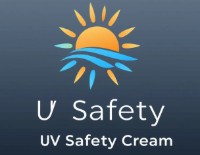UV Protection for Welding Industry

Welding produces intense ultraviolet radiation that poses serious health risks to workers. Proper UV protection is not just recommended—it's an essential occupational health and safety requirement.
Understanding UV Radiation in Welding
The electric arc or plasma flame in welding processes generates intense ultraviolet radiation across all three UV spectrums:
UV-A (Long Wave)
Wavelength: 315-380 nm
Effects: Penetrates deep into skin, causes premature ageing and long-term damage
Our Protection: 90% blockage
UV-B (Medium Wave)
Wavelength: 280-315 nm
Effects: Causes sunburn, skin cancer, and immediate skin damage
Our Protection: 99% blockage
UV-C (Short Wave)
Wavelength: 100-280 nm
Effects: Most dangerous, causes severe burns and eye damage
Our Protection: 100% blockage
Common UV-Related Welding Injuries
Arc-Eye (Photokeratitis)
Many arc welders are familiar with the condition known as "arc-eye"—a sensation of sand in the eyes. This painful condition is caused by excessive UV exposure to unprotected eyes.
- Symptoms appear 6-12 hours after exposure
- Extreme pain and light sensitivity
- Temporary vision loss possible
- Repeated exposure can cause permanent damage
UV Burns (Welder's Flash)
Skin exposure to welding UV can result in severe burns, often without prior warning. The burn may not be felt until hours after exposure.
- Similar to severe sunburn
- Blistering and peeling
- Increased cancer risk
- Neck area particularly vulnerable
Long-Term Effects
Chronic UV exposure in welding environments can lead to serious long-term health consequences.
- Skin cancer (melanoma)
- Cataracts
- Premature skin ageing
- Immune system suppression
Critical Safety Note
Welders' necks are often unprotected and can develop cancerous tumours. Many welders focus on face protection but neglect other exposed skin areas, particularly the neck and arms.
Comprehensive UV Protection for Welders
Multi-Layer Protection Approach
- Primary Protection: Welding helmets and shields for face and eyes
- Secondary Protection: Protective clothing covering all skin
- Essential Protection: UV barrier cream on all exposed skin areas
Even with protective equipment, UV radiation can reflect off surfaces and reach exposed skin. This makes UV barrier cream an essential component of welder safety.
UV Cream Application for Welders
Before Work
- Apply generously to all exposed skin
- Pay special attention to neck area
- Include ears, back of hands, and wrists
- Allow 10 minutes for absorption
During Work
- Reapply every 2-3 hours
- Reapply after heavy sweating
- Check for missed areas during breaks
- Keep cream accessible at workstation
High-Risk Areas
- Neck (front and back)
- V-neck area of chest
- Forearms and wrists
- Any gap in protective clothing
UV and Chemical Interactions
Exposure to ultraviolet rays may increase the skin effects of some industrial chemicals commonly found in welding environments:
- Coal tar compounds
- Cresol compounds
- Cutting fluids
- Degreasing agents
This interaction makes UV protection even more critical in industrial welding environments.
Occupational Health & Safety Compliance
The use of welding barrier cream and UV protection cream on exposed skin is an essential part of your Occupational Health and Safety requirements. Employers have a legal obligation to:
- Provide adequate UV protection equipment
- Ensure UV barrier cream is available and used
- Train workers on UV hazards
- Monitor and enforce UV protection protocols
- Maintain records of UV protection measures
Benefits of UV Protection Compliance
Reduced Injuries
Fewer UV-related injuries and time off work
Lower Costs
Reduced medical claims and compensation
Better Productivity
Healthier workers are more productive
Legal Protection
Compliance with OHS regulations
Protect Your Welding Team Today
Don't wait for UV injuries to impact your workforce. Implement comprehensive UV protection with our specialised welding barrier cream.
Get Bulk Pricing View Products